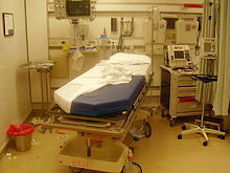This HealthAffairs article looks at what Accountable Care Organization funders can do to maximize an ACO’S potential. Among the suggestions of the authors, Andrea Ducas, Rob Houston, Tricia McGinnis, and Stephen Shortell:
1. “Encouraging movement toward greater accountability. Experts still grapple with the question of what ACOs are really accountable for. There is a need to clarify goals (for example, cost reduction, quality and value improvement, transfer of risk to providers) and to use these insights to drive accountability…. ”
2. “Breaking down policy and regulatory barriers. Barriers exist that inhibit optimal ACO data sharing, such as privacy regulations, software interoperability, and regulations limiting how Medicaid funding can be used to address the social determinants of health. Minimizing these barriers may help ACOs and their partners to create more efficient and innovative ways to serve patients.”
3. “Facilitating multipayer alignment. Support for alignment—for example, aligning payment methodologies with quality measurement and reporting requirements, but also aligning efforts across payers and programs—may help ACOs develop more population-based models, reduce measurement confusion, and increase provider participation.”
4. “Refining risk adjustment across populations and services. More accurate risk adjustment methods that include factors like the social determinants of health could make ACOs better able to bear more financial risk and to support population-based models, particularly for people dependent on the safety net.”
5. “Managing market consolidation. Additional research is needed to determine the effects of ACO arrangements on market consolidation. The results from such research could inform future regulatory or other market action that may be taken by state or federal governments, if they felt it was warranted.”
6. “Encouraging greater patient engagement in care. Funding could be used for research or pilot projects to improve patient engagement. More specifically, foundations could explore ways that well-designed incentives might promote shared decision making and greater self-care management.”
7. “Improving measurement of ACO success. Randomized controlled trials and other formal, but more feasible, methods of evaluating ACO interventions and performance relative to non-ACO activity could help to identify key factors in ACO success and lead to adoption of more scalable models.”





